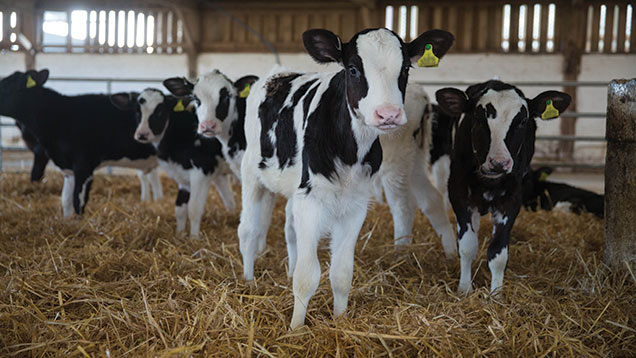Cattle farmers warned to watch for pneumonia in calves
 © Tim Scrivener
© Tim Scrivener Cattle farmers are being advised to be on the lookout for symptoms of Mycoplasma bovis infection in youngstock this autumn after a study of 2,500 calves reveals it is on the rise.
Samples taken from calves last year by Zoetis Animal Health found 45% were positive for the pneumonia causing bacteria M bovis, compared with 41% in 2013.
Tim Potter of Westpoint Veterinary Group believes the rise in cases could be as a result of increasing awareness, but adds that the signs of infection have changed.
Last year Farmers Weekly reported on Cumbrian dairy farmer Duncan Maughan of Gateshaw Mill, Cumrew, who estimated his two-year battle with sick and underperforming cows cost him £1m .
Advice for minimising M bovis spread
- No single control measure will provide 100% protection – because there is no M bovis vaccine, control what you can
- Vaccinate for other respiratory diseases in sufficient time for the animal to develop immunity before any risk period – usually before moving calves to market or before housing
- Reduce stress in calves as many carry M bovis naturally with no ill-effects, but stress allows it to take hold
- Manage the environment to reduce spread by improving airflow – if an infected animal breathes out the air quality is good so others won’t breathe it in
- Protect the youngest calves from draughts and getting cold by providing nesting material or calf coats
- Clean and disinfect teats and feeders regularly – these can be a source of rapid spread of infection
- Do not feed infected waste milk
- Act quickly on any animals showing signs of illness
He believed the bacterium was probably the biggest health threat UK dairy farmers have had to face, wiping out large numbers of cows when left to persist in a herd.
Symptoms
In youngstock, M bovis may present itself with pneumonia symptoms such as coughing, a runny nose and high temperature.
However, the tell-tale sign increasingly seen is droopy ears, caused by the bacteria colonising the ear and the back of the throat, explains Dr Potter.
See also: Get on top of calf pneumonia this autumn
In severe cases there may be large amounts of pus pouring from the ear, the animal is depressed with a high temperature and this decreases feed intakes, he adds.
Left untreated, the ear canal will become damaged and the animal may develop a head tilt and issues with balance.
As there is no vaccination for M bovis, Dr Potter advises farmers to be vigilant in their checks for respiratory disease as early detection and correct treatment is key to minimise the impact.
Treatment
Dr Potter says farmers should check with their vet to make sure the right product is used as the bacterium doesn’t have a cell wall and is resistant to a number of antibiotics.
Due to the location of the infection it can be hard for antibiotics to reach so longer acting or repeat doses may be needed, he added.
In most cases of respiratory disease, M bovis is often present with another virus; para-influenza 3 virus (Pi3v), bovine respiratory syncytial virus (BRSv), infectious bovine rhinotracheitis (IBR), or bovine viral diarrhoea (BVD).
Dr Potter advised vaccinating against these to reduce the challenge on the calf, should it be infected with M bovis as well.
“If M bovis does come in, it won’t be on top of a viral infection.
“Protecting against respiratory disease will reduce the risk of M bovis and its severity,” he says.
